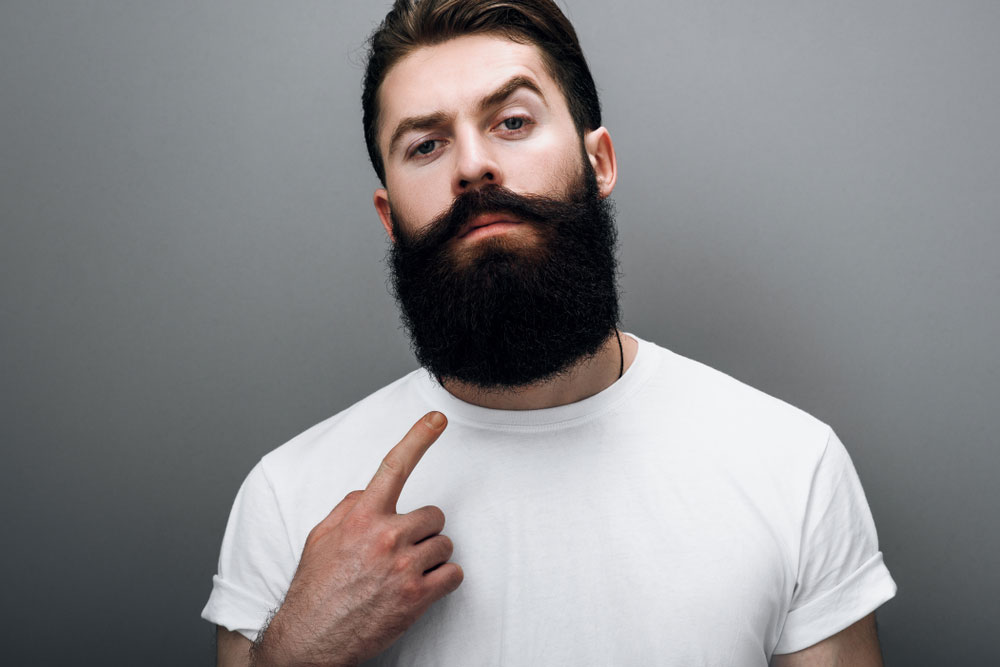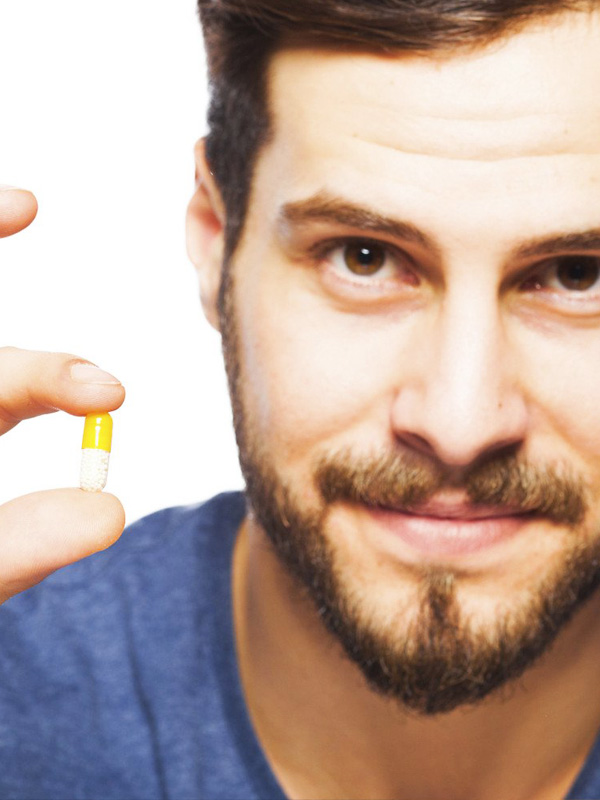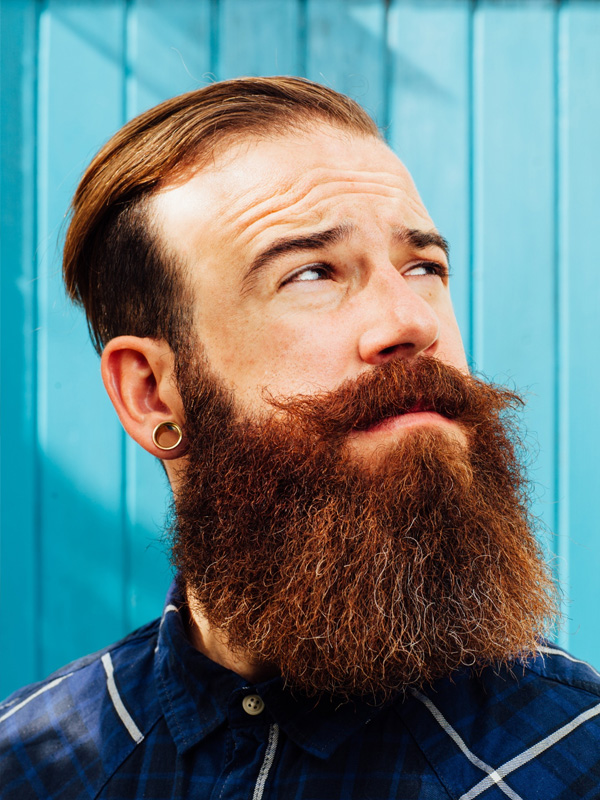STEP 1 : Body Care
Facial hair, just like any physical appearance, is directly related to your body’s health.
- Meals packed with proteins such as fish, beans and eggs should be part of your daily diet. For additional protein rich foods see table below.
- Stress level reduction. A major factor for loss of hair, especially in men, is stress. You can reduce stress by incorporating a little more exercise. Keep in mind sleeping well is also a necessary stress reliever.
- Exercise will enhance blood flow, which in turn promotes the growth of facial hair.
- Use a scrub or an exfoliant, such as the Abe & Jar Sailors Blend Beard Shampoo, once weekly in order to remove dead cells. This helps to stimulate new hair growth.
- Apply beard moisturizers such as the Abe & Jar Beard Balm or Oils.
Over 30 Foods That Will Help Your Beard Grow
| PROTEINS | NUTS & SEEDS | FRUIT | GREENS |
|---|---|---|---|
| Poultry (chickens, turkeys, geese, ducks..) | Almonds | Apples | Cabbage |
| Eggs | Walnuts | Oranges | Lettuce |
| Fish | Peanuts | Blueberries | Collards |
| Red Meat | Cashews | Strawberries | Spinach |
| Beans | Hazelnuts | Grapes | Broccoli |
| Yogurt, Milk, Cheese | Pistachios | Papayas | Kale |
| Sunflower Seeds | Lemons | Brussels Sprouts | |
| Flaxseed | Limes | ||
| Kiwis | |||
| Pomegranate | |||
| Avocado | |||
| Pineapple |
STEP 2 : Dedication to the Beard Growth Process
The most prevalent reasons men quit growing that lavish beard is the relentless itching during the first weeks. Even though the itching is temporary, most men won’t make it to that full beard stage and give up right before progress is apparent.
Here are a few tips to help stop that itch and grow that luxurious beard.
For good beard growth you must follow the four-week beard rule, while trying to reduce or eliminate the itchiness.
Abe & Jar has a few techniques that are discussed in the Abe & Jar Beardology Educational Section of the website. Look for Stop the Beard Itch Steps to reduce the itching and at some point, the hair softens and itching will diminish.
STEP 3 : Incorporating Vitamins and Minerals
Apart from having to eat well, you need to supplement your body with the right vitamins and minerals. Talk to a physician about adding Biotin (no less than 2 mg) daily. Biotin is usually available in vitamin stores as well as health and food supermarkets. Biotin helps increase the development of nails and facial hair.
Fruits and vegetables should be part of your eating routine as both are rich sources of the vitamins and minerals your hair relies on and needs to develop rapidly. Without appropriate nutrients, the body starts to decrease hair production.
Look into adding or increasing your day-to-day intake of beta-carotene, vitamin B6, vitamin C, vitamin E, nettle, and flax seed oil (we recommend the use of a good Multivitamin). Please be careful while using these supplements, it is not ideal to take more than the required dose. Extra dosages do not mean additional hair growth, the proper balance is needed.
Talk with your physician so as to create a safe and balanced supplement routine for you.
STEP 4 : Let it Grow
During the first month of growing your beard it will look messy and untidy. To make it look better you will be urged to trim and shape it. As troubling as this may sound, you need to avoid any grooming at these early stages for at least four weeks.
The hairs should not be trimmed, shaped or cut. As difficult as this may be to grasp, the beard will grow quicker and proper if you can just avoid bothering it.
After at least 4 weeks (but preferably 6) you can start to shape and clean it up.
NOTE : Trimming your hair to make it thicker is just a myth.
Remember the hair will be firm and rigid those first weeks, so you simply need be patient and apply the right moisturizers till it softens. At some point after those four weeks you can clean it up any way you want.
STEP 5 : Work It
There is a difference between the hair on your face and that which is on your head. Facial hair will not fill all the spots on the face.
Within the beard there might be little regions where hair simply won’t grow in. What’s important is that you have to let the beard grow long enough to hide those bare spots.
Genes will play a major role determining where and how many bare spots there will be.









